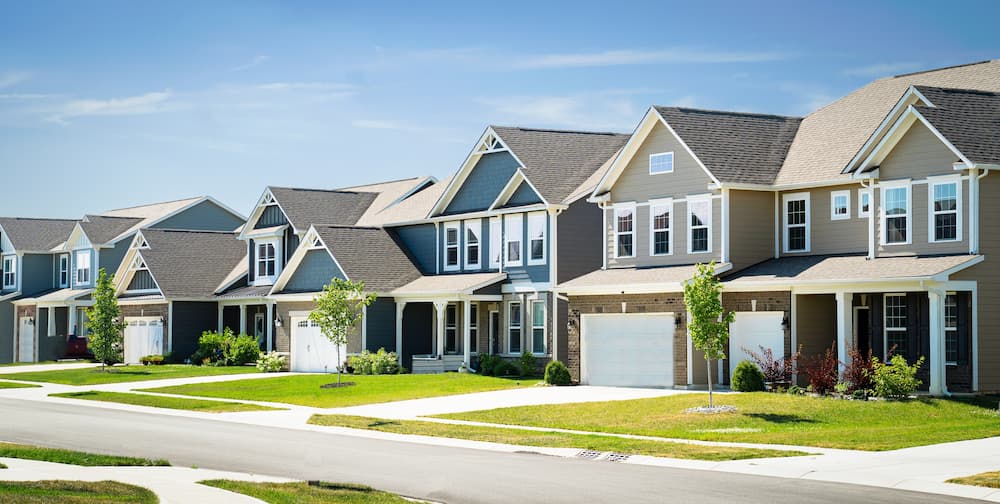With its expansive landscapes, dynamic cities, and larger-than-life personality, Texas offers many options for anyone moving to the Lone Star State. Whether you’re drawn to the fast-paced heart of its urban centers or the serene, spacious suburbs, understanding the nuances of living in urban vs. suburban neighborhoods is the key to making an informed decision about your next home.
Defining Urban vs. Suburban Living
The choice between urban and suburban living is more than just a preference for city lights or large lots; it also plays an important part in finding your ideal pace of life, social environments, and accessibility to amenities. Let’s examine the differences between these two options to understand which may be right for you.
Urban living is characterized by life in the city’s heart, where bustling streets, towering buildings, and a mosaic of cultures and activities mark the community’s pulse. Urban areas offer a fast-paced lifestyle with immediate access to various amenities, from diverse dining and shopping to arts and entertainment, all within walking distance or a short public transit ride.
Suburban living, on the other hand, offers a retreat from the intensity of city life. It’s defined by more spacious residential areas on the city’s outskirts, featuring quieter neighborhoods, larger homes with yards, and a more uniform community layout. Suburbs are designed with family life in mind, offering safety, green spaces, and a closer-knit community vibe. While not as densely packed with amenities and activities as urban centers, suburban areas provide a balanced lifestyle with enough conveniences and recreational options for a comfortable living.
Pros and Cons of Urban vs. Suburban Neighborhoods
Urban and suburban neighborhoods offer different lifestyles, each with its own advantages and drawbacks. Understanding these can help you decide which environment best suits you.
Pros of Living in an Urban Community
- Convenience: Urban living places you in the heart of the action, where stores, cafes, and services are just a few steps away. This proximity to necessities and luxuries alike makes city living highly convenient.
- Job Opportunities: Major cities are economic engines that offer various job opportunities across industries. The concentration of companies and startups makes urban areas ideal for career growth and networking.
- Cultural Amenities: Urban centers are cultural hubs, offering an array of museums, theaters, galleries, and live music venues. The constant rotation of exhibits, performances, and events ensures there’s always something new to explore.
- Diversity: Living in a city exposes you to various cultures, languages, and lifestyles. This diversity enriches the community and offers a wider range of cultural experiences and food options.
- Less Need for a Car: Many urban areas boast comprehensive public transportation systems, and their walkability can greatly reduce or eliminate the need for personal vehicle ownership, saving on parking, fuel, and maintenance costs.
Cons of Living in an Urban Community
- Higher Cost of Living: The demand for space in cities drives up the cost of living, including rent, groceries, and entertainment, making urban living more expensive.
- Noise and Crowds: The energy and bustle of city life come with noise and crowded spaces, which can be overwhelming for those seeking peace.
- Limited Green Space: While many cities have parks, they can be scarce and crowded. Access to nature and quiet outdoor spaces is often more limited than in the suburbs.
- Smaller Living Spaces: Urban housing often consists of apartments and condos with less square footage than suburban homes to accommodate the dense population, challenging those who desire more space.
Pros of Living in the Suburbs
- More Space: Suburban homes typically offer more square footage, larger yards, and more personal space, making them ideal for families or anyone who appreciates room to breathe.
- Quiet and Peaceful: The suburban setting offers a respite from the constant buzz of the city, with quieter streets and a slower pace of life that many find calming and restorative.
- Family-Friendly: Suburbs are often designed with families in mind, featuring good schools, playgrounds, and community events that foster a safe and engaging environment for children.
- Community Feels: The lower density of suburbs can facilitate stronger community ties. Neighbors tend to know each other, creating a supportive and friendly atmosphere.
Cons of Living in the Suburbs
- Commute: Living outside the urban core might mean a longer commute to city-based jobs, which can add time and stress to daily routines.
- Limited Public Transit: Suburban areas typically have less extensive public transportation options, making personal vehicles necessary for commuting and errands.
- Fewer Entertainment Options: While suburbs offer peace and space, they may lack the variety of dining, entertainment, and cultural activities found in urban areas.
- Dependency on a Car: The spread-out nature of suburban neighborhoods usually requires driving for most activities, increasing reliance on a car for daily life.
Whether urban or suburban living suits you best depends on your needs, lifestyle, and priorities. Both environments offer unique benefits and challenges, making it essential to consider the aspects of daily life that are most important to you.
Suburban Neighborhoods in Major Texas Cities
Austin
Austin’s city limits contain a vibrant urban core, but its suburbs, like Dripping Springs and Georgetown, offer more space and tranquility. Suburban Austin provides a perfect blend of city accessibility and suburban comfort.
- Georgetown
- Dripping Springs
- Cedar Park
- Lakeway
- Round Rock
Houston
The Houston area is vast, with suburbs that range from the coastal vibes of Galveston to the family-oriented communities of Katy and Pearland. Each suburb offers unique perks, from seaside living to bustling retail centers.
Dallas
Dallas combines the best of urban living with suburban serenity in places like Denton, Forney, and Waxahachie. These areas provide a peaceful retreat without sacrificing the convenience and amenities of city life.
Which is the Best Choice for You?
Choosing between urban and suburban living hinges on several personal factors:
- Lifestyle: Urban areas cater to those who love energy and diversity, while the suburbs are ideal for those seeking space and tranquility.
- Commute: Consider the distance and time to your workplace or favorite spots.
- Amenities: Evaluate the importance of nearby shops, restaurants, and parks.
- Cost: Balance your budget with the cost of living in each area.
- Transportation: Decide if you prefer public transport options or driving.
- Noise and Crowds: Consider your tolerance for urban hustle vs. suburban calm.
- Social/Community Life: Consider the type of community and social life you desire.
Find Your Ideal Home in Texas with Wan Bridge
Choosing where to live in Texas—whether in the dynamic streets of its cities or the serene lanes of its suburbs—is about finding the place that feels right for you. Wan Bridge is here to make that choice easier, with communities that embody the best of both worlds.
Wan Bridge proudly offers a range of communities, from vibrant neighborhoods near city centers to scenic retreats in the suburbs. Each built-to-rent neighborhood is home to luxurious houses for rent in Texas, situated in highly desirable regions such as the Houston, Dallas, and Austin metro areas. Our properties are thoughtfully designed to meet diverse needs, ensuring you don’t compromise comfort, convenience, or quality of life. And because we provide full-service property management services, our residents are free to focus their time and energy on making the most of every moment – not dealing with maintenance or repairs.
Here, you can discover the life you’ve always wanted to live. Explore Wan Bridge communities to find your perfect Texas home, where the best urban and suburban living awaits.
Image Credit: JazK2 / Shutterstock







